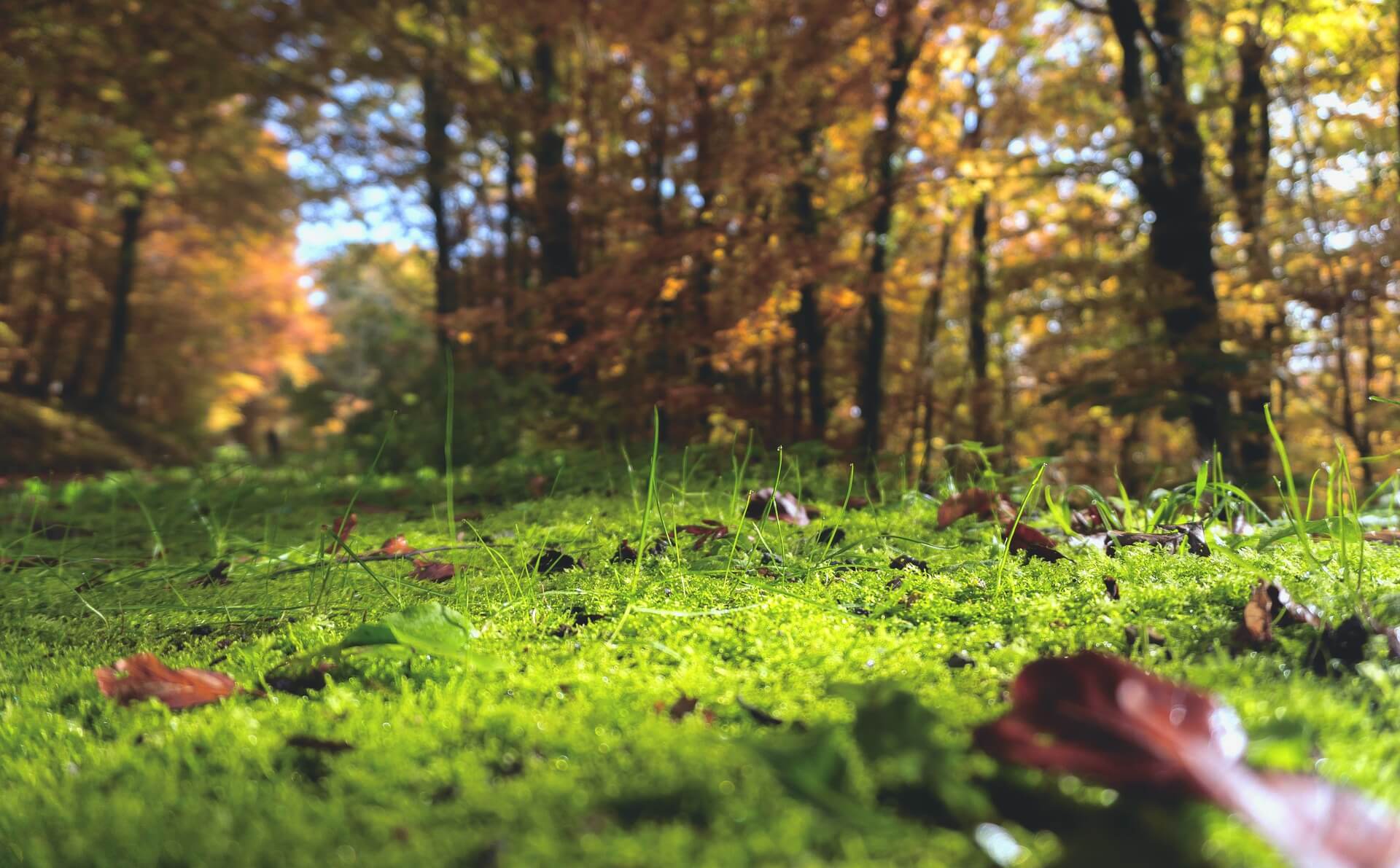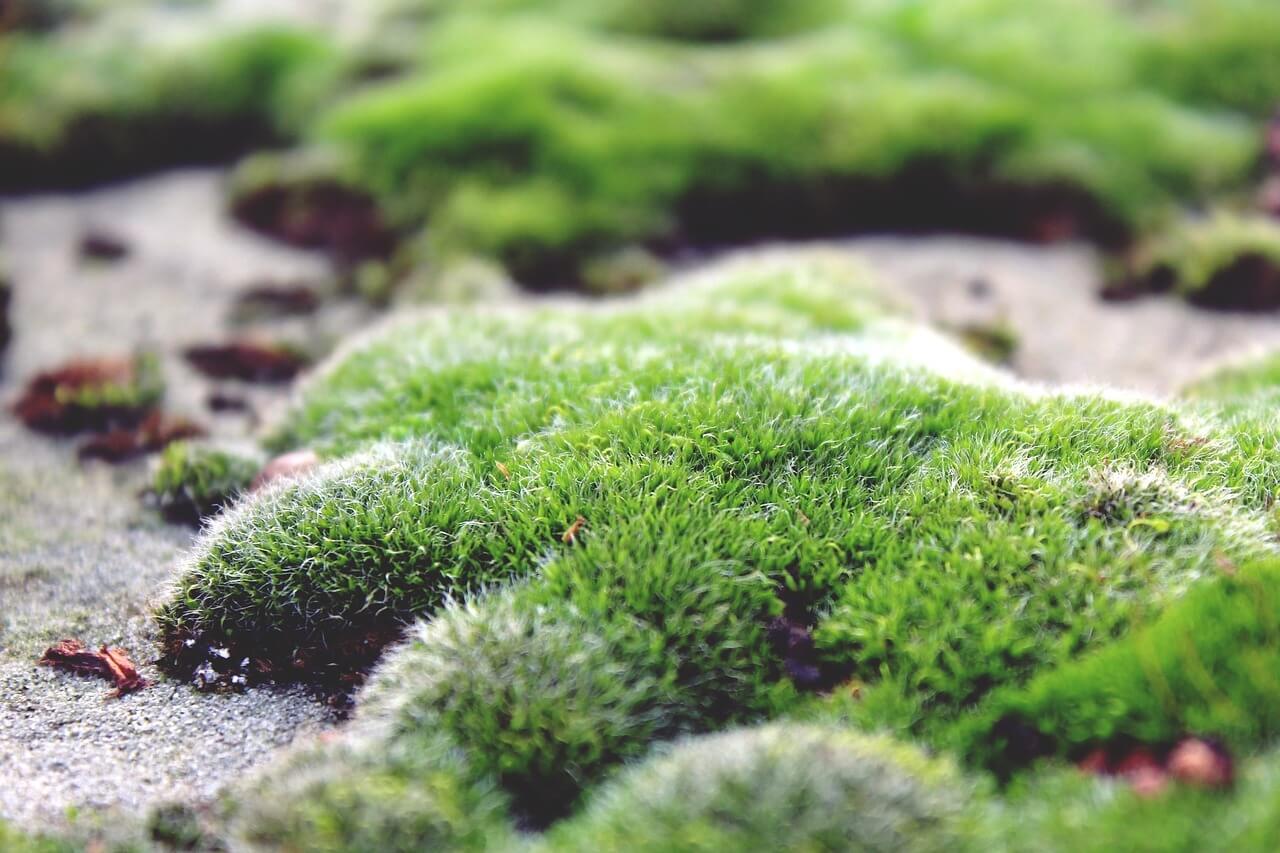
Is your garden in need of a design shake up? Do you dream of smooth rolling lawns, but without the hassle of maintaining them? Then perhaps a moss carpet would be a great alternative for you, either across the whole of your garden or for a particular area. Contrary to popular belief, many types of moss can actually grow in the sun as well as the shade, so there’s no need to limit where you can place your moss garden. The key is to look for moss that’s growing in similar conditions to your chosen location when you’re picking samples to transplant. In this guide you’ll learn how to grow moss in your garden with just a few simple steps.
Preparing the area
Pretty much all soil types are suitable for growing moss, except the most sandy soils as these might not be stable enough. Begin by clearing the intended area of any remaining grass, leaves and other debris. Smooth out the soil but feel free to leave curves, bumps and ridges in as desired. Remember that moss clings very closely to the shape of the ground, so any landscaping will be clearly visible. Lightly scratch the earth with a rake to make it easier for the transplanted moss to gain a grip.
Gathering moss
In order to grow a new moss lawn, we’re relying on the natural ability of moss to grow outwards and cover a horizontal area. All you need are samples of living moss to expand and cover your chosen ground. As mentioned earlier, the best way to pick the type of moss that will grow best is to look for some growing in similar conditions – soil type, shading and access to moisture. Obviously ask permission if you’re going to take samples from somewhere outside of your own garden. Scrape some moss from the ground or trees at the original location using a trowel or spatula. This will be easiest when the moss is slightly damp, so go out after a rainfall or spray it with some water yourself. Once you have your sample split it up into lots of small pieces – enough fragments as you can to get good initial coverage of your intended area.

Transplanting the moss
Start by wetting the earth you’ve prepared, though be careful just to make it damp to the touch rather than completely waterlogged. Then push the small fragments of moss into the dirt, not spread out too sparsely but enough so that the whole area is fairly well covered. If you’re worried about the pieces shifting, you can secure them in place with netting or pins to start with.
Settling in
After the transplant it’s important to water the moss regularly – at least a few times a day. Spray the whole moss lawn lightly with water, using a fine head on the hose or a spray bottle for smaller areas. Keep pressing the fragments down, either with your hands or by walking over them. Be aware that it will take some time for the moss to acclimatise and expand to fill in all the gaps. But soon enough you will be enjoying a rich, smooth, spongy lawn all year round.
Moss has great potential to really enhance your garden and differentiate it from a standard turf lawn, which can often be a struggle to keep looking healthy and trimmed. Whether you want a natural secluded cove at the end of the garden or just a place to lay out in the sun, a moss lawn is definitely worth considering. You can transplant the moss any time of year, just keep in mind any falling leaves and adjust your watering depending on the weather. Remember to choose moss suited to your intended place, and you can find varieties that will thrive in shade or sun. A lot of moss is also drought tolerant, all it needs to grow well initially is constant moisture and a lack of competition from other plants.
If you do decide to take the plunge and try out growing moss in your garden, please get in touch and let us know how you get on!
–
George works in the Primrose marketing team. As a lover of all things filmic, he also gets involved with our TV ads and web videos.
George’s idea of the perfect time in the garden is a long afternoon sitting in the shade with a good book. A cool breeze, peace and quiet… But of course, he’s usually disturbed by his energetic wire fox terrier, Poppy!
He writes about his misadventures in repotting plants and new discoveries about cat repellers.